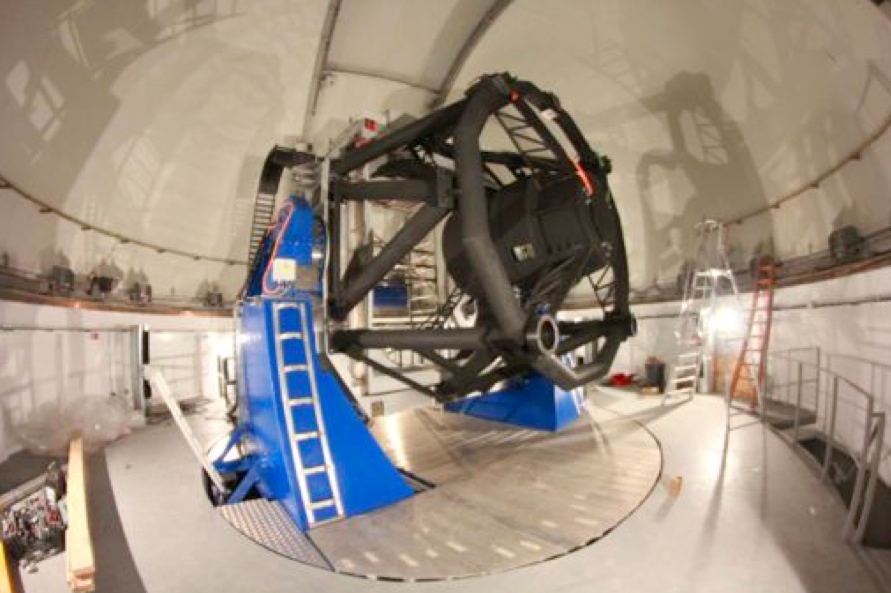AYA2016-81065-C2-2: J-PAS: Large scale structure, cosmology with baryon acoustic oscillations and low-redshift cosmology

J-PAS (Javalambre Physics of the Accelerating Universe Astronomical Survey) will start taking data with the T250 telescope of the OAJ by the end of 2018, expecting completion in approximately eight years. In 2018 the Pathfinder Survey started, using a smaller field camera. The auxiliary J-PLUS survey started in late 2015, using the T80 telescope of the same Observatory. When completed, JPAS will be a map of 8500 sqdeg observed through 54 narrow- and 5 wide-band filters. The (5sigma) limiting magnitude in the narrow filters will be AB~22.4 up to 7000 A, decreasing to AB~21.2 at the red end. These features define a survey which will yield redshifts of very high quality for >15M luminous red galaxies and >70M emission line galaxies. The primary purpose of J-PAS is to study, through the measurement of BAOs and other methods, the properties of the dark energy which is responsible for the acceleration of the Universe. J-PAS will also produce a catalog of ~100M galaxies with exquisite detail (comparable with spectroscopic data, accurate to 0.3%) , and ~400M galaxies with accuracy similar to the best current photometric projects (like ALHAMBRA or COSMOS).
The main aim of our subproject is to use J-PAS from an "astronomical" point of view to study the properties and evolution of the objects detected in it. In particular, we include:
- The large-scale structure, its evolution, and how this is reflected in the type segregation, or the relationship between segregation and local density.
- The processes of galaxy formation and evolution, and how they reflect in the luminosity function at different times. The possibility of studying peculiar objects (by color, distance or luminosity) which will appear in our project given the huge volume involved.
- Galaxy clustering in the smallest scales, including both the haloes in which they reside or the interaction in the scale of small galaxy groups. We will study data from nearby galaxies observed with J-PAS and J-PLUS and the satellite structure of our own Galaxy.
Last but not least, our group is also responsible for project outreach within J-PAS.
